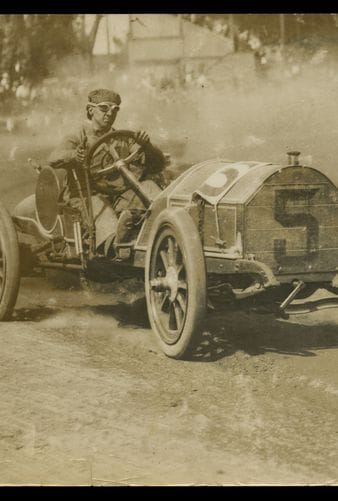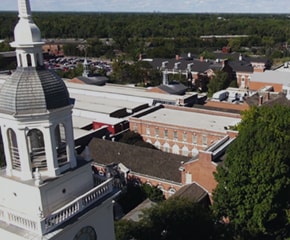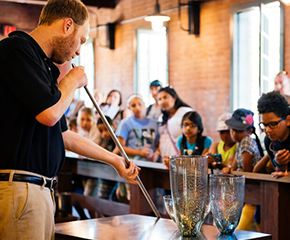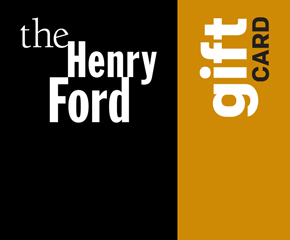
Henry Austin Clark, Jr. Photograph Collection
The photograph collection of Henry Austin Clark Jr. collector, museum owner and devotee, documents the history of the automobile in Europe and the United States.
Biographical / Historical Note
Henry Austin Clark Jr. was born in 1917 and from an early age showed a near-obsession for automobiles. While attending Harvard in the late 1930s, Clark purchased his first classic automobile starting a collection that would, by the late 1970s total over...
MoreHenry Austin Clark Jr. was born in 1917 and from an early age showed a near-obsession for automobiles. While attending Harvard in the late 1930s, Clark purchased his first classic automobile starting a collection that would, by the late 1970s total over 200 vintage and classic "brass-era" automobiles, trucks and fire trucks. After naval service during World War II and marriage, Clark and his wife Waleta ("Wally") moved to Southampton, NY and settled into a life of collecting, rallies and tours, and raising a family. Clark's collection of cars outgrew the sheds and garages on the estate leading him to open the Long Island Automotive Museum in 1948, in large part to house his collection. Over the next thirty years, Clark bought, sold and traded cars, parts and accessories and entertained visitors and fellow enthusiasts at the museum and at vintage car club events and tours. By the late 1970s however, the museum's operating losses forced Clark to begin selling many of his precious automobiles. In 1979, over two hundred automobiles were auctioned off and a year later the museum was shuttered. Throughout his life Clark also collected hundreds of thousands of photographs, slides, negatives, magazines, advertisements, clippings, and programs related to the history of the automobile. Henry Austin Clark, Jr. passed away on December 15, 1991 the day after his precious collection of automotive history began to be moved to the Benson Ford Research Center at The Henry Ford.
LessScope and Content Note
The Henry Austin Clark Photograph collection is made up of four subgroups. The PHOTOGRAPHIC PRINTS SUBGROUP, the PHOTOGRAPH ALBUMS SUBGROUP, the NEGATIVES SUBGROUP and the MOTION PICTURES SUBGROUP. The PHOTOGRAPHIC PRINTS SUBGROUP is made up of 13 series. The Accidents series, 1900-1979 (0.4 cubic ft.), contains prints of automobile accidents and wrecked vehicles and is arranged chronologically. The Automobiles series, 1853-1980 (14.8 cubic ft.) is made up of two subseries; the General subseries, 1853-1980 includes photo prints of various automobiles and is arranged alphabetically by make or model, and the Unidentified automobiles subseries, circa 1910-1960, includes unidentified photo prints of automobiles. The Automotive Reference Copy Photographs series, circa 1903-1950 (3 oversize boxes) is made up of 3" x 4" copy prints of automobiles. The copy prints are arranged alphabetically and include basic identification information including manufacturer, model and year. The Commercial Vehicles series, circa 1895-1950 (2 cubic ft.) is made up of photographic images of commercial vehicles including trucks, ambulances, busses, fire trucks, hearses, horse drawn vehicles and taxies. The images are arranged alphabetically by type of truck. The Events series, circa 1900-1988 (2.8 cubic ft.) automotive and automobile-related public events including automobile shows and exhibitions, collector meets, parades, road rallies and competition tours. The prints are arranged alphabetically by event type and then chronologically. The Framed Prints series, undated (2 oversize boxes) contains larger format framed photographic images and the Mounted Prints series, undated (2 oversize boxes) contains larger format mounted prints. The Motoring series, undated (0.2 cubic ft) consists of images, photographs and copy prints showing automobiles in use on streets, highways and roadways. The Parts series, circa 1895-1965 (0.2 cubic ft.) is made up of copy prints and photographs of various parts and assemblies of different vehicles. The series is arranged alphabetically by part or subject. The Personalities series, circa 1910-1960 (0.8 cubic ft.) includes photographs of myriad individuals related to the automobile industry. Subjects include Gottlieb Daimler, President Calvin Coolidge, Roy D. Chapin, John and Horace Dodge, William Durant, Henry Ford and Eddie Rickenbacker. The series is arranged alphabetically by last name. The Non-Automotive Subjects series, circa 1896-1940 (0.4 cubic ft.) consists of images of various forms of motor transport including agricultural vehicles, aircraft, campers, military vehicles, motorcycles and close-up details of automotive parts. The series is arranged alphabetically by topic or subject. The Places series, circa 1900-1980 (0.4 cubic ft.), contains photo images of various locations related to automobile history including Henry Austin Clark's Long Island Automotive Museum, Ormond Beach and Sag Harbor, Maine. The series is arranged alphabetically by location or topic. The Racing series, 1894-1978 (3.6 cubic ft.) is made up of three subseries. The Race Cars subseries, contains images of various racing cars and is arranged alphabetically by car. The Drivers subseries consists of headshots and portraits of drivers in cars. The subseries is arranged alphabetically by driver name. The Races subseries is made up of race day, track-action shots of various races. The subseries is arranged alphabetically by race or track. The Stereographic Cards series, 1 oversize box is made up of paperboard-backed color and black-and-white stereographic image depicting a wide array of topics beyond automobiles and automobile culture. The PHOTOGRAPH ALBUMS SUBGROUP, 1896-1980 (114 oversize boxes) is made up of three series encompassing nearly 200 photo albums acquired or compiled by Henry Austin Clark Jr. that collectively illustrate and document the development and popularization of the automobile. Although wide-ranging in scope, topics include early automobile races, exhibitions and auto shows and manufacturing. The Commissioned Photographs series, circa 1896-1957 is made up of photographs and photo reprints purchased or borrowed by Henry Austin Clark Jr. Topics and subjects include automobile shows and exhibitions, automobiles, and commercial vehicles. The Copy Photographs series contains copy prints of photographs, negatives, illustrations and published images. Each box holds two to three albums. Each album contains images covering a wide variety of topics, subjects and events related to automobiles, races, individuals, manufacturers and events. Clark devised a numbering system for the photographs which he copied. Approximately half of the photo albums in this subseries are numbered with Co numbers Co64 to Co7564. These are arranged in consecutive order in the albums. Due to this ordering system, the albums cover a broad range of subjects. The remaining albums comprising this subseries are arranged by subject. These albums seem to have been copied in their entirety from an individual or organization, and were not necessarily assigned a Co. number. Often the photographic prints were assigned numbers based on the photographer who made the image or the subject depicted. For example, photographic prints numbered with the prefix NYP are images depicting an automobile race which ran from New York to Paris in the early part of the twentieth century. The Vintage Photographs series consists of photo albums acquired by Henry Austin Clark. The photographic prints in these albums depict many of the early automobile races and tours of the world. Among the races depicted in the photographic prints are the Gordon Bennett Race (1903), the Paris-Madrid Race (1908), and the Vanderbilt Cup Race (1905-1906). Tours include a series of albums on the Glidden Tour (1905-1946), and a large number of albums documenting Charles J. Glidden's tour of the world in a motor car (1903-1908). These albums show the experiences and people encountered on this multi-year tour of the world in an automobile. Among the locations that Glidden drove through are Europe, North America, Egypt, Arabia, China, Burma, Java, New Zealand, Australia, and Mexico. The NEGATIVES SUBGROUP is made up of four series. The Copy Negatives series (16 oversize boxes) consists of large format copy negatives (generally 3"x 4") of images, photographs and photographic prints acquired or borrowed by Henry Austin Clark, Jr. The Copy Negatives are primarily automobile related but there are also negatives of the Long Island Automobile Museum and personal material. Copy Negatives are labeled with the following identification code: Co (signifying "copy") followed by a number between 1 and 7565. Please note that copy prints of most of the negatives in this series may be found in the Photograph Albums subgroup, Copy Photographs series. The Alpha-Numeric Negatives series (20 oversize boxes) is made up of additional photo negatives taken by Henry Austin Clark, Jr. and include personal photos of his family, friends and events and vintage automobile shows in which he participated. In addition, there are photos of automobiles and automobile-related materials from Clark's collections or copied from other collections. There is some overlap in subject matter with the Copy Negatives. The negatives in this series are identified by an alpha-numeric code followed by numbers 1 through 12. In addition, the Alpha-prefix range extends beyond Z and include AA, AB, AC and so on until ADW. Topical Negatives series contains four subseries. The Vanderbilt Cup races and albums subseries (1 oversize box) contains negatives from the 1904, 1905, 1906 Elimination, 1906, 1908, 1909, 1910, 1911, 1936, and 1937 Vanderbilt Cup Races. The Vanderbilt Cup Race negatives are labeled "V-04-XX", the middle two digits are for the year of the race and the last digit(s) are the negative numbers. These are copy negatives made by HAC or photographs he collected or borrowed. In addition there are photographs from two William K. Vanderbilt Jr. Albums, marked "vblt 1a through 51c" (the lowercase letter stands for the four locations on the album page, "a" through "d") and "vblt 1 through 29." Finally, the box contains miscellaneous Vanderbilt negatives and prints from two unidentified races. The Manufacturers subseries (1 oversize box) contains negatives and contact prints of automobiles arranged alphabetically by automobile manufacturer. The Events and Races subseries (1 oversize box) includes negatives, contact prints and copy prints of various races and automobile-related events (shows, exhibitions, tours and meets). The negatives are irregularly identified and numbered. The General Topics and Subjects subseries (5 oversize boxes) contains negatives of various individuals or subjects related to early automobiles and racing. Not all negatives are numbered or identified. The subseries includes negatives and contact prints of Clark's family, public and club events, various vehicles displayed at the Long Island Automobile Museum, along with some unidentified and undated prints and color negatives used by Clark and the staff at the Long Island Automobile Museum to produce postcards sold by the museum. There are also negatives and contact prints for the 1909 Denver to Mexico Pathfinder tour that took place from May 1 to June 3, 1909 and the 1950, 1954 and 1956 Glidden Tours. The Transparencies series, circa 1866-1970s and undated (14 oversize boxes), consists of larger format copy negatives of automobile models and makes. The negatives are arranged in sequential order based on a numeric filing system created by Henry Austin Clark Jr. The format, nnn-nn starts with the first three digits signifying a base prefix between 001 and 520. The last two digits indicate the individual negatives and range from 01-25. There is an index to the transparencies in Box 242. The 1908 New York to Paris Race series (5 oversize boxes) is made up of glass plate negatives documenting the 169-day endurance and reliability race. The series is divided into geographic locations that follow the final route taken by the competitors. A handwritten index of image titles/subjects is included in the series and foldered separately. The Motion Pictures subgroup consists of 18 films depicting automobile races, events, promotions and safety presentations. Digital copies of the motion pictures are available for viewing in the Benson Ford Research Center Reading Room.
Collection Details
Object ID: 92.1.1774.0
Creator: Clark, Henry Austin Jr., 1917-1991
Inclusive Dates: 1896-1975
Size: 25.6 cubic ft and 185 oversize boxes
Language: English
Collection Access & Use
Item Location: Not Currently On Exhibit
Access Restrictions: The collection is open for research.
Credit: From the Collections of The Henry Ford. Gift of the Family of Henry Austin Clark, Jr.
Digitized Artifacts From This Collection
In many cases, not all artifacts have been digitized.
Contact us for more information about this collection.
Thomas Flyer in Germany, New York to Paris Race, 1908
Artifact
Lantern slide
Summary
The 1908 New York to Paris race was a 22,000-mile automobile endurance contest that spanned three continents and lasted over 169 days. In late July, the American team in a Thomas Flyer passed through Germany. After five long months, the Flyer soon would be in Paris and declared the winner.
Creators
Keywords
Object ID
92.1.1774.233
Credit
From the Collections of The Henry Ford. Gift of the Family of Henry Austin Clark, Jr.
Location
By Request in the Benson Ford Research Center
Get more details in Digital Collections at:
Thomas Flyer in Germany, New York to Paris Race, 1908
What is The Henry Ford?
The national attraction for discovering your ingenuity while exploring America’s spirit of innovation. There is always much to see and do at The Henry Ford.

Thomas Flyer on a Railroad Trestle near Goshen, Indiana during the New York to Paris Race, 1908
 Details
Details
Thomas Flyer on a Railroad Trestle near Goshen, Indiana during the New York to Paris Race, 1908
Artifact
Lantern slide
Summary
In 1908, six automobiles raced around the globe from New York City to Paris, France. The contest took 169 days, covered 22,000 miles and spanned three continents. The cars and their racing teams had to endure cold, snow, mud, poor roads and other hardships. Drivers found ways around poor road conditions by using established rail lines -- usually with the railway company's approval.
Creators
Place of Creation
Keywords
Object ID
92.1.1774.31
Credit
From the Collections of The Henry Ford. Gift of the Family of Henry Austin Clark, Jr.
Location
By Request in the Benson Ford Research Center
Get more details in Digital Collections at:
Thomas Flyer on a Railroad Trestle near Goshen, Indiana during the New York to Paris Race, 1908
What is The Henry Ford?
The national attraction for discovering your ingenuity while exploring America’s spirit of innovation. There is always much to see and do at The Henry Ford.
Spectators in Grandstand Awaiting Beginning of Vanderbilt Cup Race, 1906
Artifact
Photographic print
Date Made
06 October 1906
Summary
Spectators in the grandstand await the start of the 1906 Vanderbilt Cup race on Long Island, New York. Elsewhere, excited fans were much more difficult to control. Crowds flooded the course during the cup race, and one spectator was killed. The Vanderbilt Cup road race was suspended for 1907.
Creators
Keywords
Object ID
92.1.1774.605.7.3
Credit
From the Collections of The Henry Ford. Gift of the Family of Henry Austin Clark, Jr.
Location
Not on exhibit to the public.
Get more details in Digital Collections at:
Spectators in Grandstand Awaiting Beginning of Vanderbilt Cup Race, 1906
What is The Henry Ford?
The national attraction for discovering your ingenuity while exploring America’s spirit of innovation. There is always much to see and do at The Henry Ford.
Driver Training Class Watching Automobile Repairs, 1937
Artifact
Photographic print
Summary
Driver education programs emerged out of a national movement to improve driver safety during the 1930s. The students in this 1937 photograph are learning about repairing an automobile as part of a high school program.
Creators
Object ID
P.1774.X.135
Credit
From the Collections of The Henry Ford. Gift of the Family of Henry Austin Clark, Jr.
Location
Not on exhibit to the public.
Get more details in Digital Collections at:
Driver Training Class Watching Automobile Repairs, 1937
What is The Henry Ford?
The national attraction for discovering your ingenuity while exploring America’s spirit of innovation. There is always much to see and do at The Henry Ford.
1901 Mercedes-Benz Number 5, circa 1955
Artifact
Photographic print
Summary
The 1901 Mercedes, built by the German firm Daimler, was one of the first automobiles with the engine up front rather than under the seat. That gave more room for bigger engines and also allowed the chassis to be lowered for easier entry and better road holding. It set the pattern for future cars.
Creators
Place of Creation
Keywords
Object ID
P.1774.X.113
Credit
From the Collections of The Henry Ford. Gift of the Family of Henry Austin Clark, Jr.
Location
By Request in the Benson Ford Research Center
Get more details in Digital Collections at:
1901 Mercedes-Benz Number 5, circa 1955
What is The Henry Ford?
The national attraction for discovering your ingenuity while exploring America’s spirit of innovation. There is always much to see and do at The Henry Ford.
Claire Trevor Beside a 1932 Duesenberg Phaeton on Set of "Big Town Girl," 1937
Artifact
Photographic print
Date Made
1937
Summary
People flocked to see the escapist films of Hollywood's golden age, featuring carefree actors and idyllic landscapes. A luxurious Duesenberg was featured in the 1937 movie Big Town Girl.
Creators
Keywords
Object ID
P.1774.CO.6744
Credit
From the Collections of The Henry Ford. Gift of the Family of Henry Austin Clark, Jr.
Location
By Request in the Benson Ford Research Center
Get more details in Digital Collections at:
Claire Trevor Beside a 1932 Duesenberg Phaeton on Set of "Big Town Girl," 1937
What is The Henry Ford?
The national attraction for discovering your ingenuity while exploring America’s spirit of innovation. There is always much to see and do at The Henry Ford.
Winners of the 1905 Oldsmobile Transcontinental Race
Artifact
Photographic print
Summary
In 1905, two Oldsmobiles raced from New York City to Portland, Oregon for the Lewis and Clark Centennial Exposition. Driver Dwight Huss and mechanic and relief driver Milford Wigle piloted "Old Scout" ahead of "Old Steady," reaching Portland in forty-four days. Upon their arrival - seen here - the winning trio delivered a greeting to the president of the exposition.
Creators
Keywords
Object ID
92.1.1774.P.CO.4651
Credit
From the Collections of The Henry Ford. Gift of the Family of Henry Austin Clark, Jr.
Location
Not on exhibit to the public.
Get more details in Digital Collections at:
Winners of the 1905 Oldsmobile Transcontinental Race
What is The Henry Ford?
The national attraction for discovering your ingenuity while exploring America’s spirit of innovation. There is always much to see and do at The Henry Ford.
The Electric Bus of the Woodstock Inn, Woodstock, Vermont, circa 1910
Artifact
Photographic print
Summary
In the 1800s, many hotels maintained horse-drawn coaches or omnibuses to transport guests to and from nearby railroad stations or take them on excursions during their stay. As manufacturers introduced horseless options, like this electric bus used by Vermont's Woodstock Inn, hotels adopted them as shuttles and sightseeing vehicles.
Creators
Keywords
Object ID
92.1.1774.P.CO.4652
Credit
From the Collections of The Henry Ford. Gift of the Family of Henry Austin Clark, Jr.
Location
Not on exhibit to the public.
Get more details in Digital Collections at:
The Electric Bus of the Woodstock Inn, Woodstock, Vermont, circa 1910
What is The Henry Ford?
The national attraction for discovering your ingenuity while exploring America’s spirit of innovation. There is always much to see and do at The Henry Ford.
Louis Nikrent's Car during the Santa Monica Road Race, Santa Monica, California, 1913
Artifact
Photographic print
Date Made
09 August 1913
Summary
Louis Nikrent kicks up dust in his #5 Mercer during the Santa Monica Road Race in the 1913 Grand Prix season. He finished third behind fellow Americans Earl Cooper and Barney Oldfield. Santa Monica was the season's only race won by an American driver.
Creators
Object ID
92.150.9616.3
Credit
From the Collections of The Henry Ford. Gift of the Family of Henry Austin Clark, Jr.
Location
By Request in the Benson Ford Research Center
Get more details in Digital Collections at:
Louis Nikrent's Car during the Santa Monica Road Race, Santa Monica, California, 1913
What is The Henry Ford?
The national attraction for discovering your ingenuity while exploring America’s spirit of innovation. There is always much to see and do at The Henry Ford.














